Middle East
No sense in Gaza ceasefire talks amid Israel’s ‘hunger war’: Hamas | Israel-Palestine conflict News
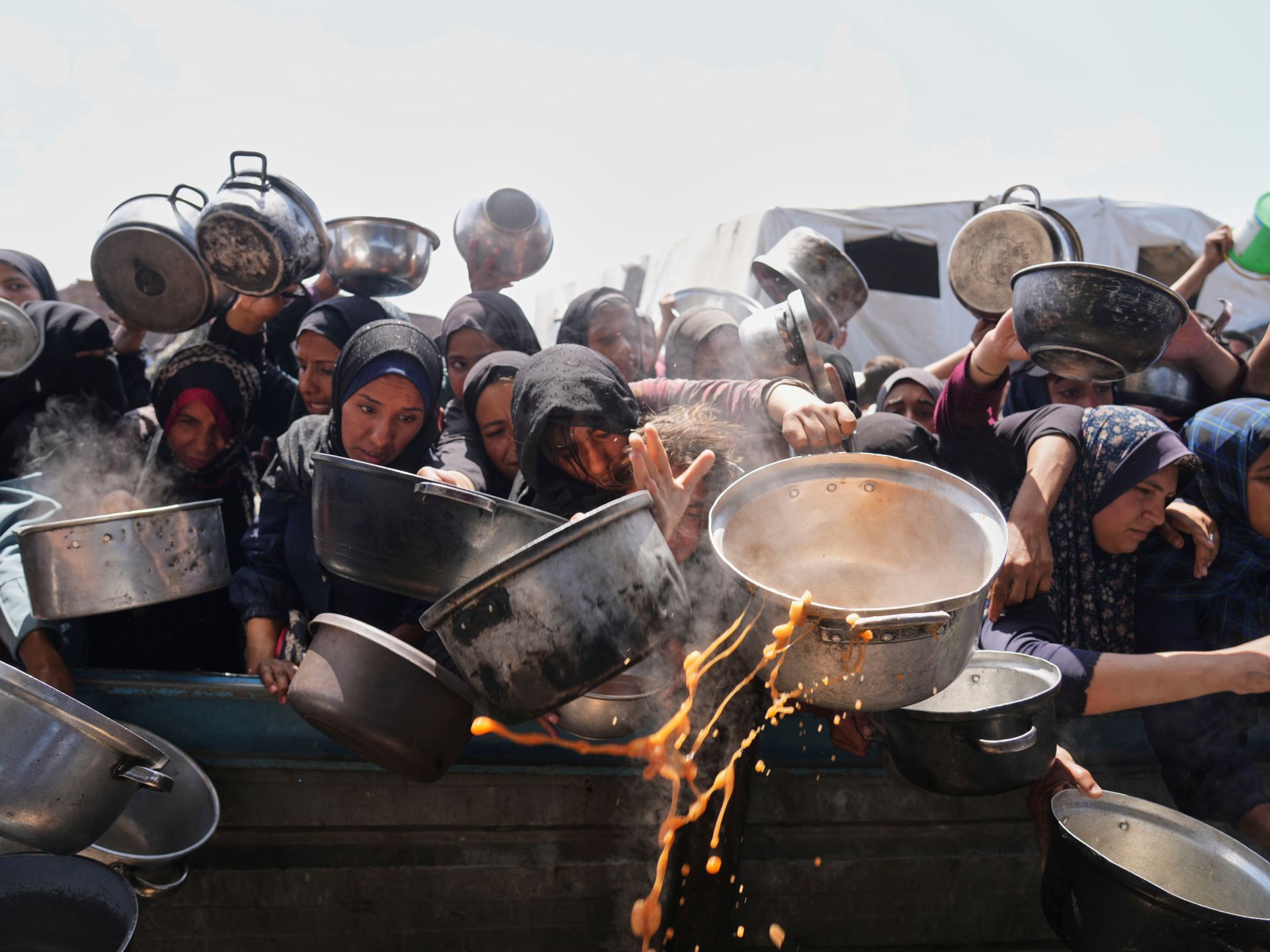
Hamas will no longer engage in ceasefire negotiations with Israel, seeing no point in doing so “as long as the hunger war and extermination war” continues on the Gaza Strip, according to the Palestinian group’s senior official.
Basem Naim told the AFP news agency on Tuesday that the international community must pressure the government of Israeli Prime Minister Benjamin Netanyahu to end the “crimes of hunger, thirst, and killings” in Gaza.
“There is no sense in engaging in talks or considering new ceasefire proposals as long as the hunger war and extermination war continue in the Gaza Strip,” he said.
Naim’s remarks came a day after Netanyahu said the population of the enclave “will be moved” in an upcoming expanded military operation by Israeli forces that would reportedly entail “the conquest of the Gaza Strip and the holding of the territories”.
Nearly all of Gaza’s 2.3 million residents have been displaced multiple times since Israel began its war on the Palestinian enclave in October 2023.
Total blockade
The humanitarian situation in the Gaza Strip has grown increasingly dire since a total blockade was imposed by Israel on March 2, causing widespread food shortages as Israel carries out deadly attacks across the enclave.
Al Jazeera’s Hind Khoudary, reporting from Deir el-Balah in central Gaza, said Palestinians are “struggling to find food to feed their children” with some “forced to eat expired or rotten food”, while others cannot find any form of sustenance.
The Palestine Red Crescent Society (PRCS) said this week that food supplies in Gaza have now “completely run out” in both local markets and humanitarian distribution centres.
“The population is once again at extreme risk of famine,” the PRCS said in its latest situation update. “There is an inability to meet even the minimum daily needs of over a million displaced people.”
According to the PRCS, only “limited quantities of legumes” are currently being distributed to community kitchens, as all previously stocked aid has been depleted.
The International Committee of the Red Cross (ICRC) echoed these concerns, calling for the immediate entry of humanitarian aid and warning against its politicisation.
“The level of need among civilians in Gaza right now is overwhelming,” said ICRC spokesperson Christian Cardon.
“Under international humanitarian law, Israel has an obligation to use all means available to ensure that the basic needs of the civilian population under its control are met,” he added.
![[Al Jazeera]](https://www.aljazeera.com/wp-content/uploads/2025/04/Interactive_Gaza_foodaid_timeline-1742987531-1744365779.webp?w=770&resize=770%2C963&quality=80)
Awad, 39, who lives in a tent in the southern Gaza city of Khan Younis, told Al Jazeera on Monday that “Israel has not stopped the war, the killing, the bombing, the destruction, the siege and the starvation – every day – so how can they talk about expanding military operations?
“I call on the world to witness the famine that grows and spreads every day,” he said.
Aya al-Skafy, a resident of Gaza City, told Al Jazeera on Monday that her baby died because of malnutrition and medicine shortages last week.
“She was four months old and weighed 2.8kg [6.2lb]. Because of severe malnutrition, she suffered from blood acidity, liver and kidney failure, and many other complications. Her hair and nails also fell out due to malnutrition.”
Israeli plans
According to leaked plans, Israel’s government reportedly wants to severely restrict the way food is distributed in Gaza and is proposing that United States companies take over distribution from the United Nations and other humanitarian agencies.
Under the plan, Palestinian families would be allowed to take one food parcel a week in designated hubs in southern Gaza, and Israel would permit 60 trucks to enter the Gaza Strip every day – just one-tenth of what’s needed, according to experts.
Aid groups in the UN have rejected this plan, saying it’s a pressure tactic to further reinforce control over life-saving supplies.
Middle East
Israel hits Yemen’s Houthi-controlled Sanaa airport in tit-for-tat attack | Houthis News
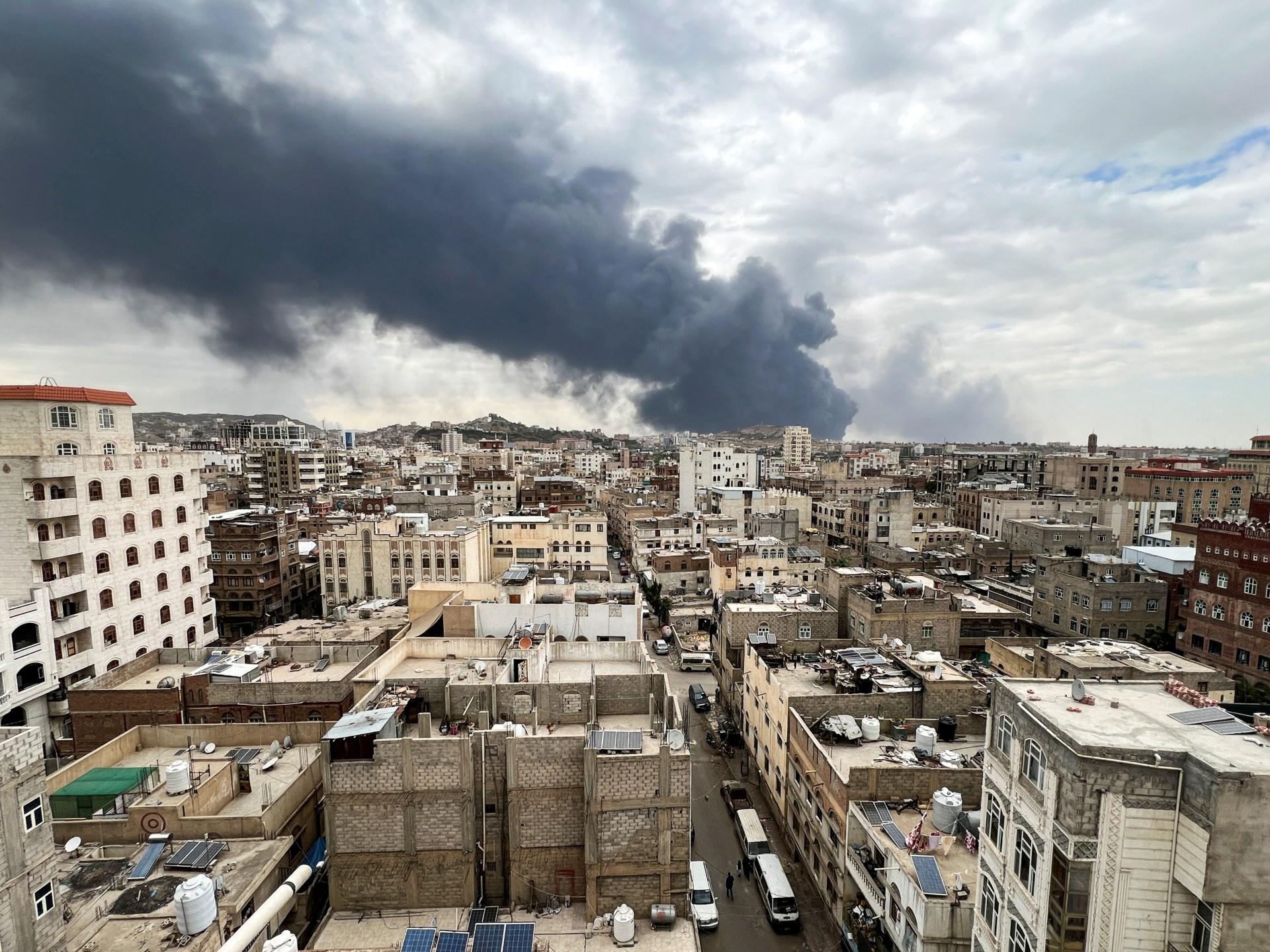
Israeli army claims ‘fully disabling’ the civilian facility, saying it also hit a concrete factory and power stations.
Israel has hit the main international airport of Yemen’s rebel-held capital Sanaa, “fully disabling” the civilian facility, according to the Israeli army.
Tuesday’s attacks that also targeted a concrete factory and several power stations in and around Sanaa came in response to Sunday’s ballistic missile strike near Tel Aviv’s Ben Gurion International Airport, the Israeli military statement said.
The army claimed that “the airport served as a central hub for the Houthi terrorist regime to transfer weapons and operatives”.
“The operation was approved by the Commander of the Air Force and the Chief of Staff,” it said. The military added that it would “continue to act and strike with force” any group that poses a threat to Israel.
Reporting from Sanaa, Al Jazeera’s Mohammed al-Attab said the results of the attacks were not yet clear.
“So far, we don’t know the impacts of this aerial bombardment on Sanaa International Airport or on the power station. We haven’t yet received any reports about casualties or impacts on the infrastructure,” he said.
‘Pure vandalism’
Sultan Barakat, a professor in public policy at Hamad Bin Khalifa University in Qatar, says Sanaa International Airport is “not a big strategic target” and that Israeli claims it is being used to receive supplies from Iran are “simply not true”.
“I think it’s pure vandalism, to be honest. The airport in Sanaa is not a normal airport. It’s under a huge restriction from the United Nations, from the Saudis, from the coalition – it’s under sanctions,” Barakat told Al Jazeera.
He added that attacking the airport will only hinder the operations of the United Nations and humanitarian agencies in one of the poorest countries in the world.
Footage of the aftermath of the airport attack, verified by Al Jazeera’s Sanad fact-checking unit, shows large clouds of dark smoke rising into the air over the capital.
Earlier, the Houthi-affiliated Al Masirah TV confirmed that among the sites targeted is a cement factory to the north of the capital and a power station in the Bani al-Harith area.
The attacks come less than 24 hours after Israel bombed the country’s key Hodeidah port, killing at least one person and wounding 35 others.
The Houthi media office said at least six strikes hit the crucial Hodeidah port. Others hit a cement factory in the district of Bajil, 55km (34 miles) northeast of Hodeidah, the group added.
The Israeli military said the strikes sought to undercut the Houthi military industry, claiming the factory is an “economic resource” for the Houthis and “used to build tunnels and military infrastructure”.
Since November 2023, the Houthis, also known as Ansar Allah, have launched more than 100 drone and missile attacks targeting vessels they said are linked to Israel in the Red Sea. The group says that it acts in support of the Palestinians in Gaza and that its attacks will stop only when there is a permanent ceasefire in the enclave.
Although the Houthis paused attacks during a fragile ceasefire in Gaza this year, they resumed their operations after Israel cut off humanitarian aid to Gaza and resumed its offensive in March.
The United States military under US President Donald Trump has launched an intensified campaign of air strikes on war-torn Yemen since March 15.
Israel has repeatedly struck Yemen, killing dozens of people, including women and children.
Middle East
Seeking funds to rebuild, Lebanon government works to regain donor trust | Israel attacks Lebanon News
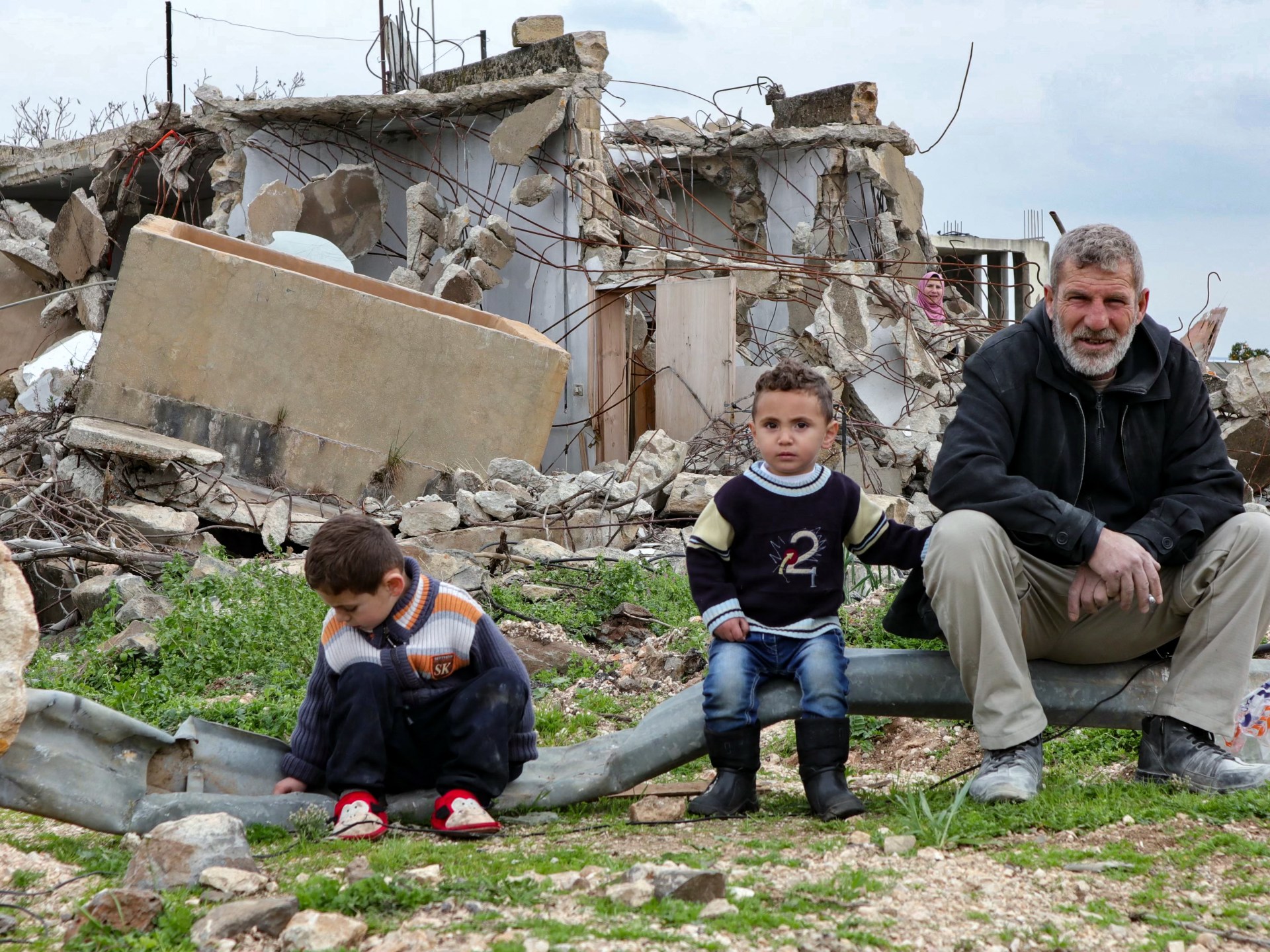
Beirut, Lebanon – More than five years into an economic crisis that sent inflation spiralling and saw the Lebanese lira plummet, Lebanon’s government is facing its biggest infrastructure project in years: Post-war reconstruction.
After 14 months of war with Israel, Lebanon needs $11bn to rebuild, according to World Bank estimates.
But, experts say, donors do not trust the Lebanese political class, which has a track record of funnelling construction contracting money to politically connected businessmen.
The needs
In addition to more than 4,000 deaths, the war took a vast material toll on the country already reeling from a multi-year economic crisis.
About 10 percent of the homes in Lebanon – some 163,000 units – were damaged or destroyed, to say nothing of the more than $1bn in infrastructure damage.
Most observers, and the new government formed in February, say Lebanon will again need foreign aid, as it did after a previous war with Israel in 2006.
But that aid has been slower to arrive than in 2006, with donor attention divided between Lebanon, Syria, and Gaza, and major donors like the United States pushing for the Hezbollah group’s disarmament as a precondition.
Hezbollah, until recently the most powerful political and military force in the country, suffered severe blows during the war and has seen its power curtailed, although many Lebanese continue to support it.
The country’s south, east, and Beirut’s southern suburbs bore the brunt of Israel’s offensive. Together, they are home to most of Hezbollah’s constituents, so restoring their homes and livelihoods is a priority for the party.
That translates into leverage for foreign donor states.
The problem
Politically connected companies overcharged the state’s main infrastructure buyer, the Council for Development and Reconstruction (CDR), by 35 percent between 2008 and 2018, a 2022 study by local think tank The Policy Initiative found.
And the primary contracting regulation was so riddled with exceptions that as little as 5 percent of tenders were under the Central Tenders Board’s oversight.
All that came to a head in 2020, when a huge blast in Beirut’s port tore through much of the capital and donors decided they wanted nothing to do with the state, according to Khalil Gebara, economist and former World Bank consultant who previously advised the Lebanese government.
“Donors stopped transferring money to national authorities or to the treasury,” he said, because they had “a total lack of trust in national mechanisms”.
Instead, donors controlled spending directly or via a World Bank-managed trust fund, or worked through NGOs, Gebara added.
That year, the state, which was stalling on implementing International Monetary Fund conditions in exchange for a partial bailout, spent just $38m on its physical investments, down from more than $1.1bn in 2018, the year before the economic collapse, according to Ministry of Finance data.

Trying for solutions
A year later, Lebanon passed what many considered a landmark reform to state contracting, one of the few reform laws passed in recent years.
It dragged virtually the entire public sector into one unified framework, abolished a classification system that had frozen out contractors without political connections, and created a new regulator – the Public Procurement Authority (PPA).
As crisis-ridden state agencies were corralled into the new system, public investment continued to fall, hitting below $10m in 2022.
“Procurement is going to be a big thing … and absolutely the test for the procurement system and for the regulatory authority,” said Lamia Moubayed, head of an in-house research and training institute at Lebanon’s Finance Ministry.
Rana Rizkallah, a procurement expert at the same institute, says the law is solid, but it’s up to the government to implement what it promised, adding that a crucial part of that is staffing the regulator.
The PPA is supposed to be a board of five members backed by a team of 83 staffers but, three years after the law went into effect in 2022, it has a single member and five employees overseeing 1,400 purchasing bodies.
A four-member complaints board that the law established also has yet to be formed, so complaints still go to Lebanon’s slow, overburdened courts.
Jean Ellieh, the regulator’s president and sole member, says the state doesn’t have the “logistical capacity” to recruit dozens of regulators in one fell swoop, but he’s put in a request for new hires.
“We will work with determination and resolve, regardless of our capabilities,” Ellieh told Al Jazeera. “We will not give anyone an excuse to evade the application of the law.”
He added that donors have expressed “satisfaction” with the PPA’s abilities.
Bonanzas to the well-connected
After several lean years in which the state had to keep spending to a bare minimum, the contracting scene remains dominated by the large companies that built up enough resources from earlier rounds of investment to stay afloat.
Wassim Maktabi, economist and co-author of the 2022 report on cartel behaviour in construction contracting, said it would be a tall order to ensure that reconstruction isn’t another bonanza for the well-connected.
“Rest assured that these political elites will not let this slip,” he said.
In addition, years of high-value contracts mean politically connected firms have accumulated the capital to be, in most respects, bigger and more experienced than competitors.
“Even if political influence was not a factor and you awarded these contracts purely based on merit,” he said, these firms “would still get a large piece of the pie”.

Regardless, Maktabi says, reconstruction is simply too important to stall in pursuit of perfection.
Al Jazeera has identified 152 reconstruction contracts totalling more than $30m that are already under way, via the PPA’s online portal. Of the top four contract winners in dollar terms, two have political connections mentioned in media reports.
The top four companies, Beta Engineering and Contracting, Elie Naim Maalouf Company, Al Bonyan Engineering and Contracting, and Yamen General Trading and Contracting, have won contracts totalling $10.6m, $4.7m, $1.8m, and $1.4m, respectively – 60 percent of the total amount awarded in the PPA contracts examined.
Pushing for reformist credibility
The new government is negotiating with the World Bank on a $980m plan, known as LEAP, to kick-start reconstruction and be funded by a World Bank loan and foreign assistance.
But LEAP would only take care of a fraction of the total reconstruction costs.
The government also started hiring for a long-stalled electricity regulatory board and new faces on the CDR board.

Moubayed says refreshing the CDR board is a World Bank requirement to approve LEAP, which would be a vital win for a government pushing to gain reformist credibility.
The World Bank declined to comment on whether refreshing the CDR board is a requirement.
It’s still unclear how the programme might be structured, but the government has endorsed the creation of a trust fund for post-war reconstruction, “characterised by transparency”.
But, Beirut residents were unhappy with a similar model used in 2020 for the Port blast reconstruction, architect and urbanist Abir Saksouk of Public Works Studio says.
A lack of equity between residents, based on which organisation took over repairing each area, further eroded a sense of shared citizenship, she says, calling it an experience that shouldn’t be repeated.
She is one of many calling for an inclusive reconstruction process led by all stakeholders, including people who have suffered damages, and with the involvement of relevant ministries, because they are a vital part of the process.
“We need a reconstruction framework where state institutions are present… But we also need other representation,” she said.
Middle East
Israel has turned 70% of Gaza into no-go zones, in maps | Israel-Palestine conflict News
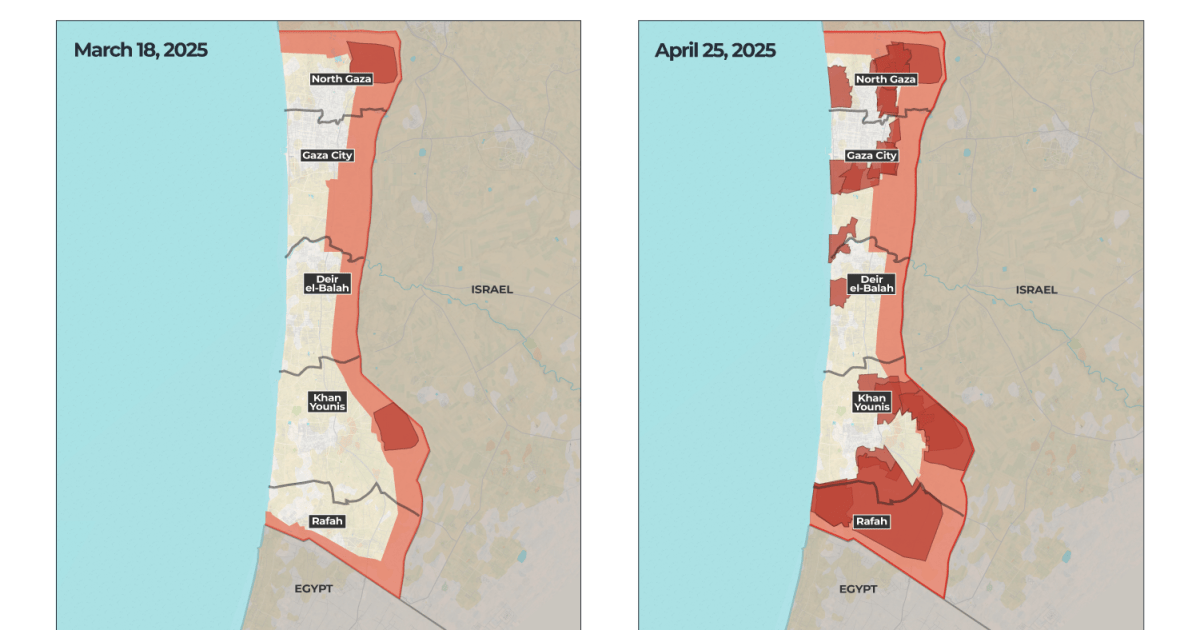
Since Israel broke the ceasefire, it has declared most of Gaza as no-go zones, forcing expulsions amid attacks and blocking of all humanitarian aid.
Israel has restricted Palestinians’ access to 70 percent of Gaza, either by declaring large areas as no-go zones or issuing forced displacement orders, according to the United Nations Office for the Coordination of Humanitarian Affairs (OCHA).
In southern Gaza, much of Rafah governorate has been declared a no-go zone, placed under forced displacement orders by the Israeli military since late March. In the north, nearly all of Gaza City is under similar orders, with only small pockets in the northwest still exempt. Entire areas east of the Shujayea neighbourhood and along the Israeli border have been declared a restricted zone.
The animated map below shows how Israel’s military has expanded its forced displacement orders since breaking the ceasefire on March 18.
Israel’s Gaza occupation plan
On Monday, Prime Minister Benjamin Netanyahu said Gaza’s more than two million people “will be moved” in a new ground offensive that will involve Israeli troops holding on to seized territory, establishing a “sustained presence” in Gaza.
This follows the unanimous approval by Netanyahu’s cabinet to call up 60,000 reservists and place the Israeli military in control of delivering food and other essential supplies to Gaza’s starving population.
Israel prioritising territorial control
Reporting from Deir el-Balah, in central Gaza, Al Jazeera correspondent Tareq Abu Azzoum said Palestinians view the Israeli ground offensive in Gaza and reoccupation of much of its territorial landscape as a form of collective punishment and an attempt to change the demographic and political map of Gaza.
Many Palestinians understand that Israel is prioritising territorial control over any political solution, and many shared their fear and panic regarding the possibility of not being able to return to their homes.
They also believe that Israel is trying not just to dismantle the military capabilities of Hamas, as the Israeli military spokesperson and Netanyahu have stated, but they are also trying to empty Gaza of its residents and to suffocate civilians.
Israel will do this by using humanitarian language alongside military tactics, including an expanded ground offensive and tightening its grip on the flow of aid to Gaza.
But there was a general and clear sentiment of defiance among many Palestinians. Social media is filled with messages of resilience and people saying they will not leave Gaza, whatever the cost.
Gaza facing ‘extreme risk of famine’
The Palestine Red Crescent Society (PRCS) says Gaza is facing “extreme risk of famine” with no food remaining in markets and aid distribution centres.
Israeli human rights group B’Tselem has accused Israel of “using starvation as a method of warfare” in Gaza. Half of those being starved by Israel are children, the prominent rights group said.
“[On] the nutritional front, the population is facing once again an extreme risk of famine,” the PRCS said in its latest situation update.

“There is an inability to meet even the minimum daily needs of over a million displaced people,” it said.
The PRCS’s food stocks allocated for displaced people are now “completely depleted”, with “limited quantities of legumes” being “distributed to community kitchens to cover some of the basic needs of displaced individuals”.
Since Israel broke the nearly two-month-long ceasefire with Hamas on March 18, its military has killed at least 2,459 Palestinians in Gaza, bringing the total number of confirmed killed in the besieged Strip to 52,567.
-
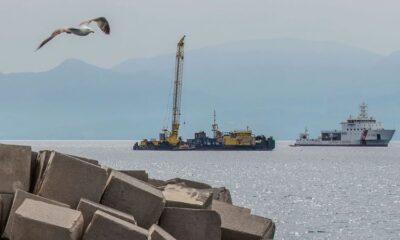
 Europe2 days ago
Europe2 days agoBayesian: Operation to recover sunken superyacht begins off Italy’s Sicilian coast
-

 Sports1 day ago
Sports1 day agoScottie Sheffler ties PGA Tour record to claim first victory of 2025 at the CJ Cup Byron Nelson
-
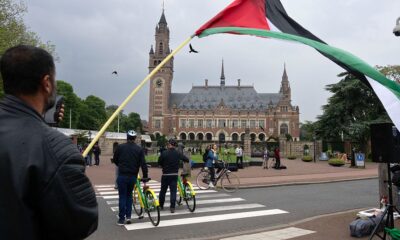
 Africa1 day ago
Africa1 day agoDemonstrators angry at ICJ’s decision to dismiss Sudan’s genocide case against UAE
-
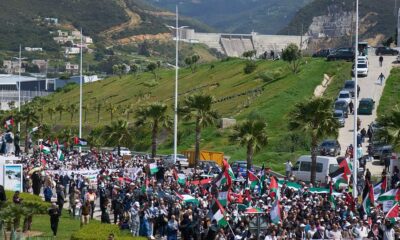
 Africa1 day ago
Africa1 day agoProtesters want Morocco to sever ties with Israel, target strategic ports
-

 Middle East23 hours ago
Middle East23 hours agoIsrael bombs Yemen’s Hodeidah port after attack near Tel Aviv | Politics News
-

 Africa1 day ago
Africa1 day agoDRC: M23 rebels seize strategic town despite peace talks
-

 Lifestyle2 days ago
Lifestyle2 days agoHow to make a colorful romaine and radicchio salad
-

 Asia2 days ago
Asia2 days agoJapan and China accuse each other of violating airspace near disputed islands




